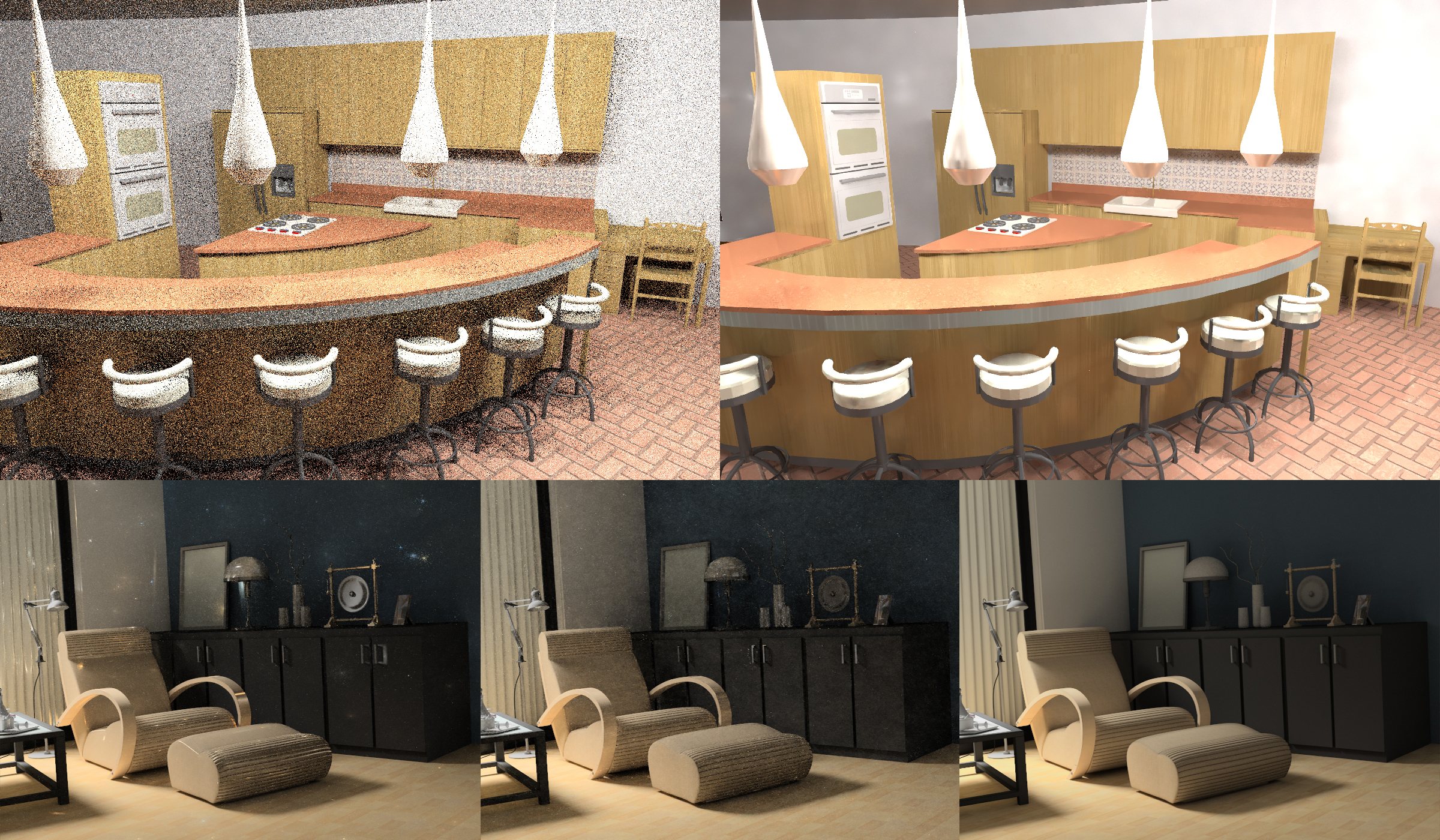Improved Variance Reduction Techniques for Ray-Traced Images
Modern day films, TV shows, and video games are filled with sequences containing spectacular and sophisticated special effects and animation. These videos are typically generated using physically-based renderers that simulate light rays bouncing around in a scene and falling on a virtual camera sensor. Unfortunately, many costly samples are typically needed to accurately synthesize an image, resulting in lengthy render times and costly production schedules for studios. When fewer samples are used, render times are shorter, but unacceptable noise begins to appear in the final image. There have been successful approaches proposed previously to reduce the color variance of these images. First, Metropolis Light Transport (MLT) is able to reduce noise by modifying the rendering system to distribute rays that more efficiently evaluate the amount of light received at each pixel. However, even with MLT, there can still be noise present in the rendered image if not enough samples are used. Another solution is to filter the image as a post-process to generate a clean, noise-free result that is close to the reference image generated with many samples. In our work, we propose two novel noise reduction techniques. The first parallelizes standard MLT to allow for efficient parallel exploration of light paths to more effectively reduce noise in the rendered image. In our second technique, we developed the first machine learning approach to filter noisy rendered images. Our Learning-based Filtering (LBF) algorithm utilizes a neural network that is trained in combination with a back-end filter in order to appropriately denoise the image and overcomes the shortcomings of previous methods. We also explore the use of multiple neural networks in a new filtering framework to further improve the output. We demonstrate high-quality results for each of the aforementioned components and provide favorable qualitative and quantitative comparisons relative to respective state-of-the-art algorithms.
